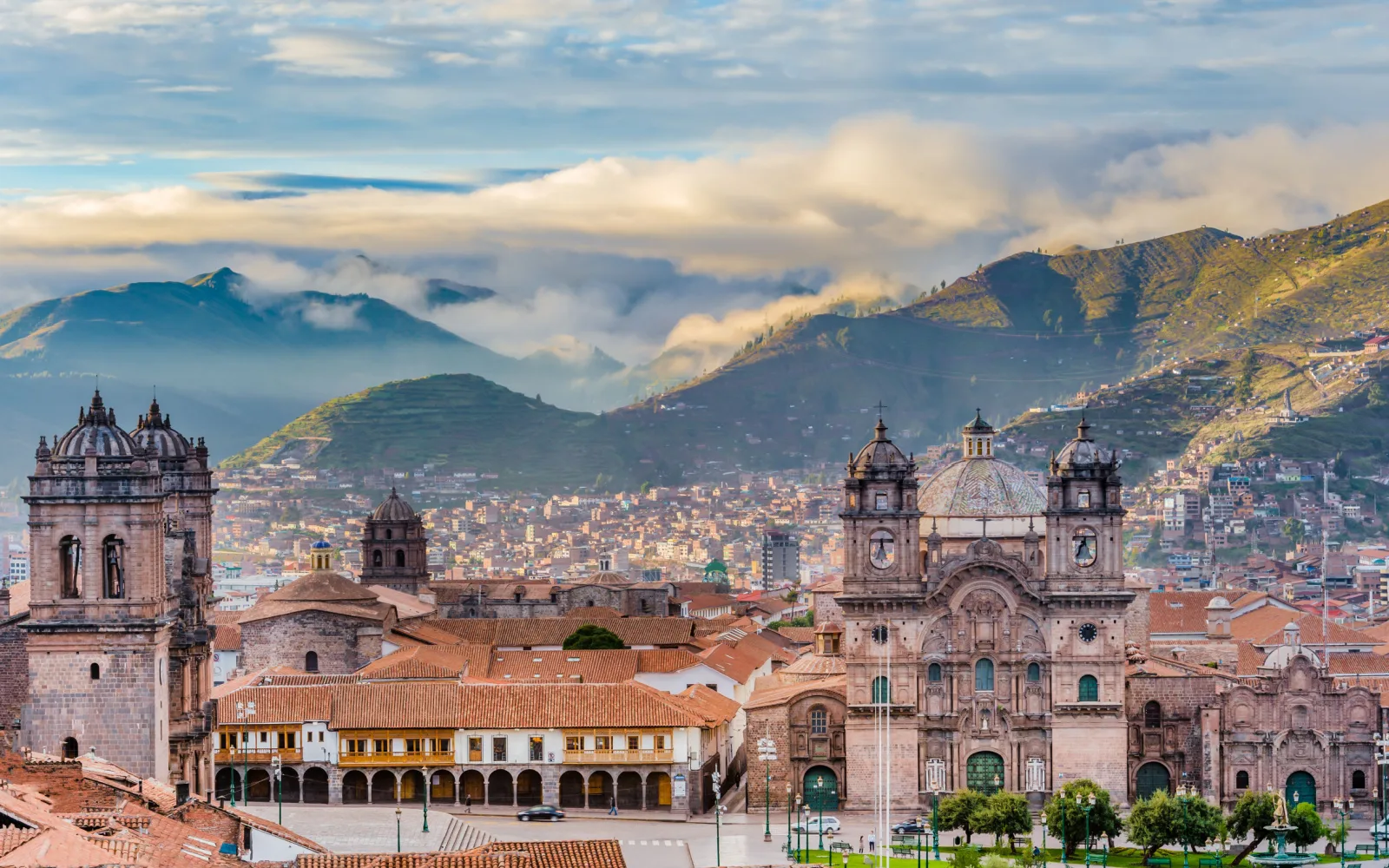On the western coast of South America, you will find the country of Peru. It isn’t the most visited country on Earth. Those who have visited may consider the country to be a well-kept secret thanks to the diverse cultural landscape and rich variety of climates and landscapes to explore.
Whether you are into hiking, history, or cultural explorations, you will be left wondering why this country isn’t even in the top 100 most visited in the world.
Peru contains rainforests, parts of the Andes mountains, and even a desert climate. The desert climate runs along the central coast and this is where you will find the capital city of Lima.
Its relatively high altitude for a coastal city gives the residents of Lima a breathtaking view of the Pacific Ocean. The city has had that name since the natives in the area named it and about one-third of the country lives in Lima or the metro area.
The most-visited tourist attraction in Peru is Machu Picchu, and It’s not even close. This Incan Citadel dates is estimated to have been founded in the 1400s and was completely abandoned in the 1500s.
It is often referred to as “The Lost City of the Incas” because its remote location in an extremely high-altitude mountain range led to it being lost at least three times over the years.
In fact, the first two visits from European explorers happened over three centuries apart.
Today, thousands of outdoorsmen, archeologists, and hikers from around the world climb to the top. It’s a must-see when you visit Peru, but there is so much more to learn about the country.
25 Fun Facts About Peru
Peru is the home of an ancient civilization, diverse wildlife, and some of the most varied beauty nature has to offer. You could stay there for a month and never stop learning or experiencing new things.
Before you go, here are some interesting tidbits of information to check out to help you get the most out of your trip.
1. There are Three Official Languages in Peru
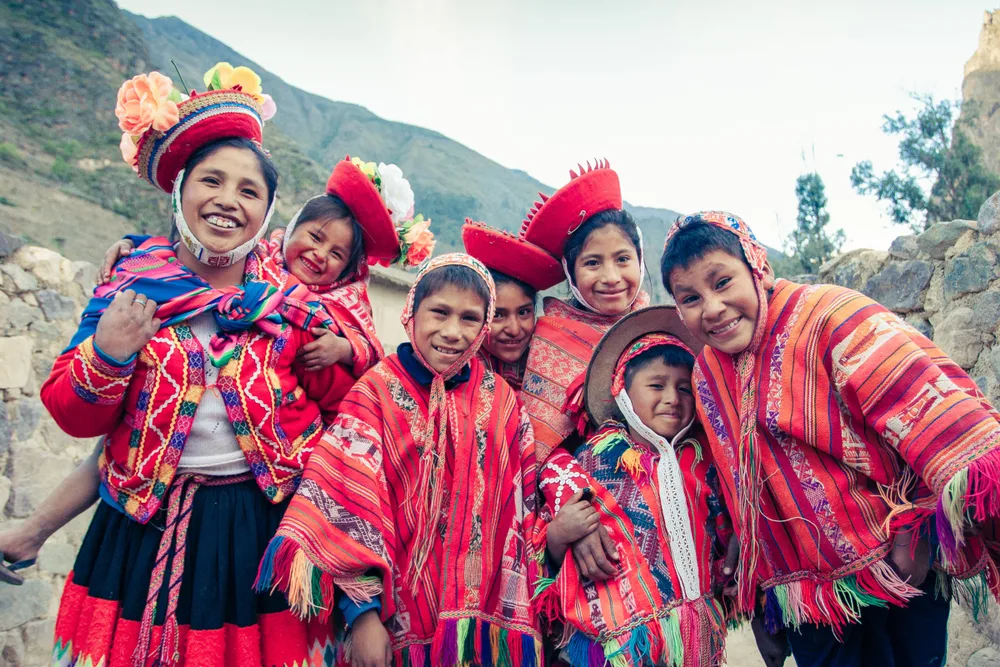
Ollantaytambo / Peru – May 29.2008: Group of children dressed up in the traditional, colorful peruvian costumes, smiling and posing for the picture./pablopicasso/Shutterstock
Peru has three official languages, Spanish, Quechua, and Aymara. Spanish is spoken there as a result of the Spanish settlers that came in the 17th century. 84% of the residents of Peru speak Spanish, making the predominant language.
Around 15% of the nation speaks Quechua. It’s an Incan language still spoken by some natives in the Andes mountains. There is also still a very small population of native Peruvians that speak Aymara.
2. Lima is Very Dry
Lima’s arid climate and high altitude make the air there very dry. In fact, Lime is the second-driest capital city on the planet.
It basically never rains in Lima, even if it does get overcast periodically. To add context, the only capital city on Earth that is drier than Lima is Cairo, Egypt, which sits in the middle of a desert.
3. Machu Picchu Is a Marvel in Construction
The Incans were incredible when it came to designing and constructing Machu Picchu. Zero mortar was used to hold the stones together.
This was achieved thanks to extremely precise cuts of stone that were designed to fit together perfectly. So perfectly that they are still mostly intact today.
Machu Picchu was also built where two fault lines meet. Modern archeologists suggest that this was done on purpose because of the increased amount of rock fragments that could be used to build.
4. Peru Is the Home of Ceviche
Latin American spices combined with the coastal region of Peru led to creation of Ceviche. Ceviche generally consists of raw fish, vegetables and citrus juices. This dish actually predates the Incans. It was developed over 2,000 years ago by an ancient civilization called the Moche.
5. There Are a Lot of Potatoes in Peru
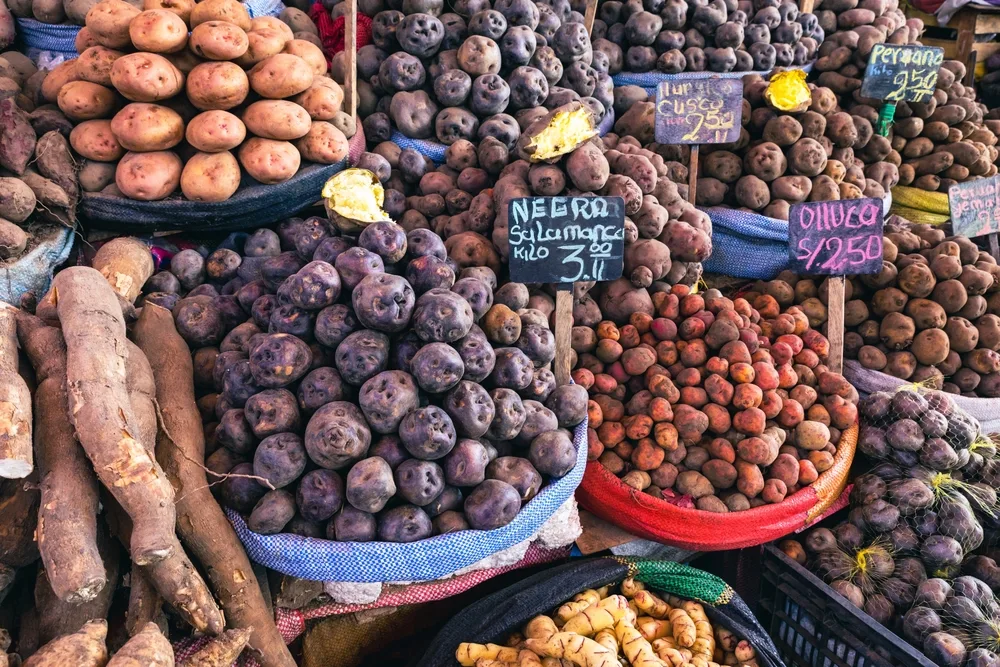
Curioso.Photography/Shutterstock
Many people think of Idaho or Ireland when it comes to Potatoes, but did you know there are over 3,000 varieties of the vegetable in Peru? Some experts estimate that the cultivation of potatoes has been taking place in the country since back as far as 8,000 B.C.
6. There Are a Lot of Alpacas
If you like alpacas, Peru is the place for you to visit. There are more alpacas in the country than anywhere else in the world. Over 70% of the world’s population of the animal live in Peru.
Thousands of families in the country make money off of farming alpacas for their meat and their wool. You will find the animal most in the Andes mountains which run along the western coast of the country.
7. It’s Where the Amazon River Starts
The Amazon River is over 4,000 miles long and is the second-longest river on the planet after the Nile. It starts high in the Andes mountain and runs through Colombia into Brazil where it empties into the Atlantic.
8. Peru Has Multicolored Mountains
Recently, it was discovered that there are mountains in Peru that lie over 16,000 feet above sea level that are rainbow-colored. Some of the mountains in this area boast up to seven different colors.
They weren’t discovered until very recently because until global warming took effect, they were covered with snow. They are very dangerous to get to because of the remoteness and elevation of their location, so not many tourists visit the rainbow mountains.
9. Peru Has Microclimates
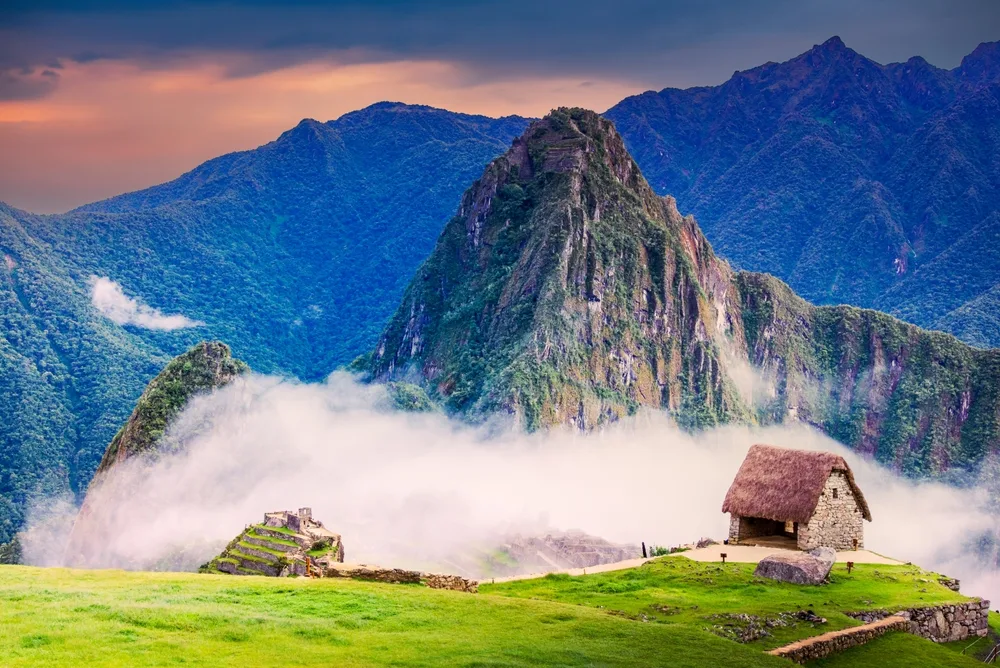
ecstk22/Shutterstock
Peru’s landscape is very diverse. Almost every kind of climate exists somewhere in the country, including over 30 world climates. The climate can also change very quickly in just a short distance. This results in over 90 microclimates existing in the country.
10. Peru Is Home to the Longest Left Breaking Wave in the World
The wave is called the Chicama wave and the surge is over 2 miles long. The nation is so intent on protecting the wave that they prevent anything from built within a kilometer of it. This makes it the only wave that is protected legally on the planet.
11. Some Peruvians Live on a Lake
On Lake Titicaca, the Uros people have created a manmade island by weaving together the reeds on the lake. An estimated 4,000 people live on the island. Lake Titicaca is unique in that it is one of the highest navigable lakes in the world.
12. Peru Has Huge Canyons Too
The mountains are high and the valleys are low in Peru. This is apparent when you visit the Cotahuasi Canyon in the southern part of the nation. It is over 11,000 feet deep. This makes it over twice as deep as the Grand Canyon in the United States.
13. Most of the Population Lives in One Area
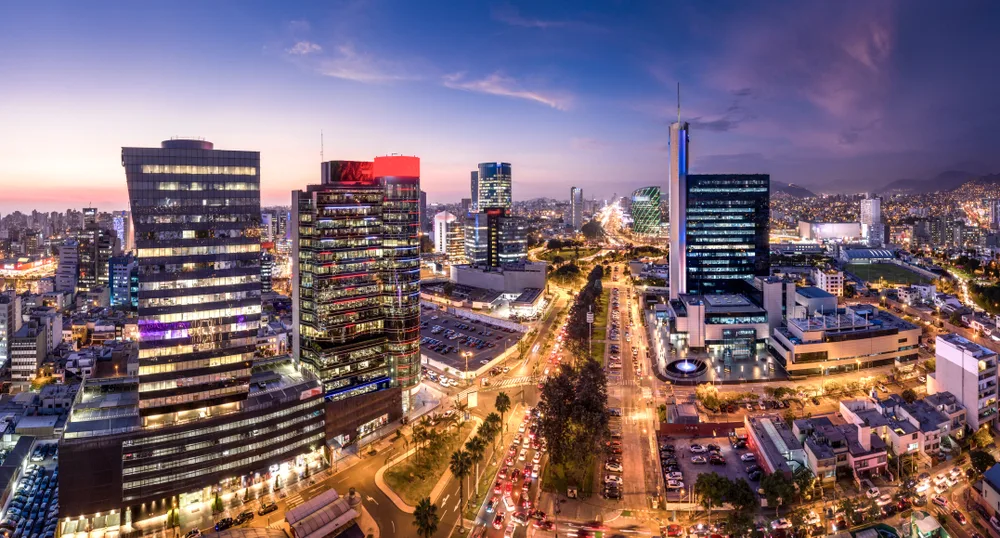
Christian Vinces/Shutterstock
Over 60% of Peru is covered in the dense Amazon rainforest. Because the rainforest is so treacherous, only 5% of the population lives there. Most Peruvians live near the coast.
14. Peru Is Home of the Giant Andean Condor
The Gian Andean Condor, as you can tell by its name, is found mostly in the Andes. They are impressive birds that can live up to 50 years. They also have a wingspan of over 10 feet, making them the largest flying bird on the planet.
15. It’s a Birdwatchers Paradise
Peru is basically the world’s aviary as it is home to almost 2,000 species of birds. This is the second-most after neighboring country, Colombia. The most surprising thing about this is scientists are still discovering new species of birds in Peru all the time.
16. These Birds Include Penguins
A small population of penguins can be found in coastal Peru. There is a colder area of the coast where they are found. There is only one breed of penguin found in Peru, the Humboldt Penguin.
17. They Regulate Elections Heavily
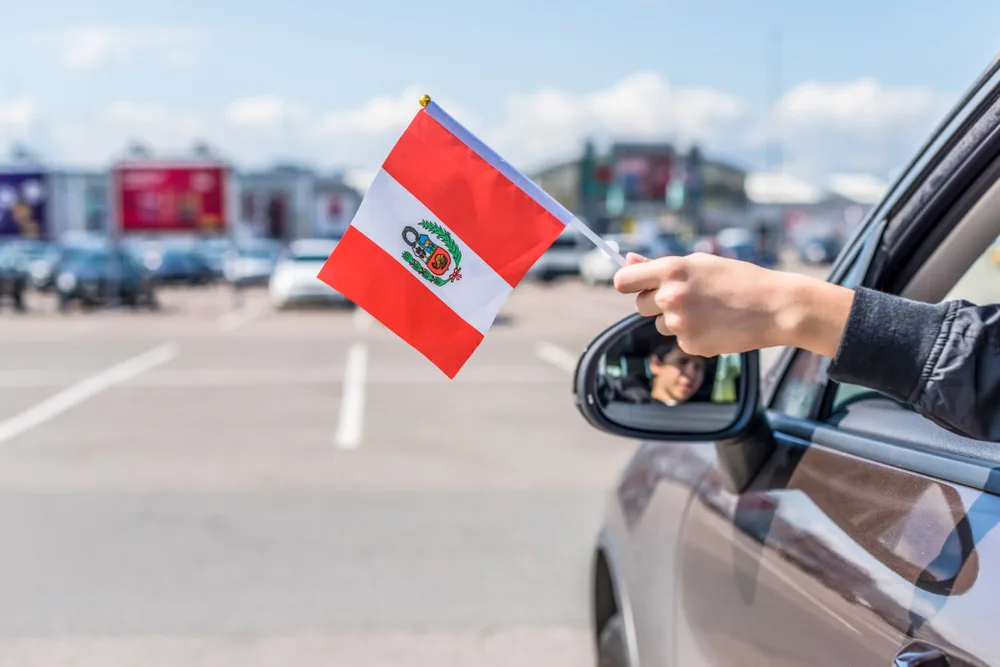
FTiare/Shutterstock
Peru strives to make its election day as safe as possible. Alcohol and carrying a firearm are both banned. It is also illegal to have large public gatherings on election day. They even go as far as banning religious leaders from wearing religious clothing on election day.
18. The Government Palace Is Worth Visiting
Those who enjoy historical buildings should visit Peru’s Government Palace. The building is over 500 years old. It was erected by Spanish colonist, Francisco Pizarro in 1535. Every Peruvian leader has used the building as its headquarters since his death, even after the country gained independence.
19. The Currency Is Called the Sol
The official currency in the country of Peru is the Sol. They have used this as currency since 1991 when it replaced the Peruvian inti. The country changed the currency to counteract the hyperinflation of the 1980s caused by the poor economy.
20. The Drivers Are Very Aggressive
It can be dangerous to be a defensive driver in Peru because the other drivers are so aggressive. It’s not uncommon to see three or even four cars driving side by side on a two lane road. They can be selfish drivers, so you need to keep your eyes peeled.
21. The Economy Is Growing Quickly
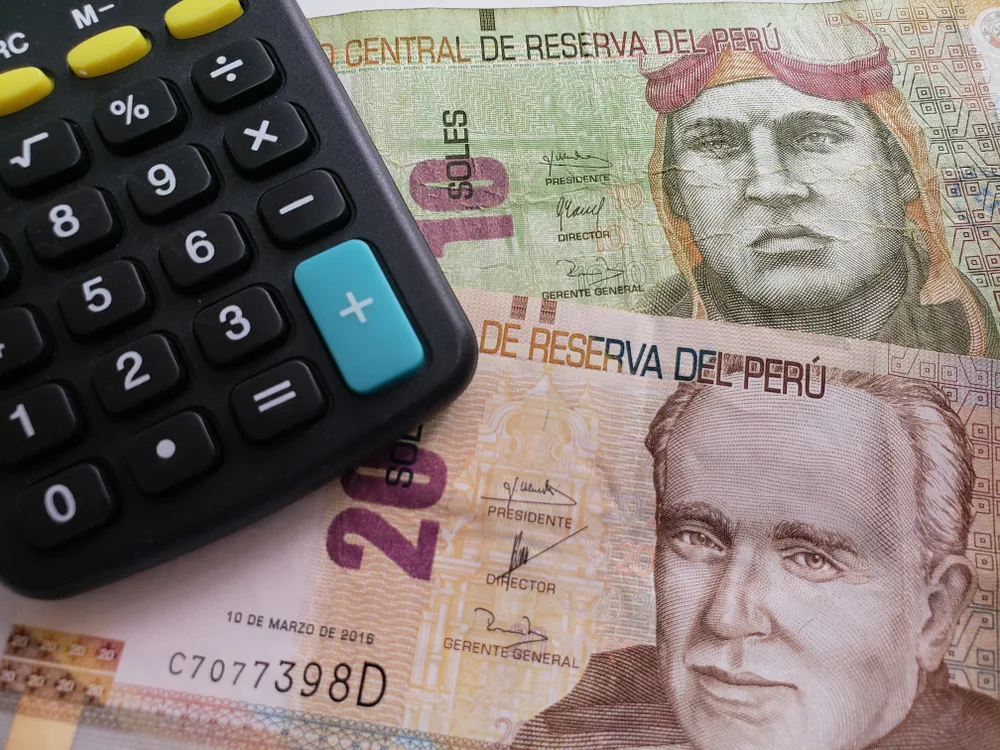
FJZEA/Shutterstock
While Peru has had economic issues in the past, the country now has one of the fastest-growing economies in the world. This is largely driven by recent economic expansion and modernization throughout the country.
The economy has also been thriving because of Peru’s prolonged economic stability which hasn’t been something the country has experienced in the past.
22. Peru Has a Woman President
Peru is one of the rare countries that has a president that is a woman. Her name is Diana Boluarte, and she was elected in December 2022. She is the first woman in history to be president of Peru. She was also the Vice President of her predecessor, Pedro Castillo.
23. Over 34 Million People Live There
Peru has over 34 million people from a variety of different cultures and ethnicities in the country. This makes Peru the 34th most populated country in the world. It’s growing too at a rate of about 1% each year.
24. Cusco Was Once the Most Important City
Cusco is a city near Machu Picchu that lies high in the mountains of Peru. It was the capital of the Incan Empire and was founded in 1100 A.D., making it one of the oldest cities in the Americas. Its mix of native and Spanish architecture makes it one of the most interesting cities on Earth.
25. The Predominant Religion Is Catholic
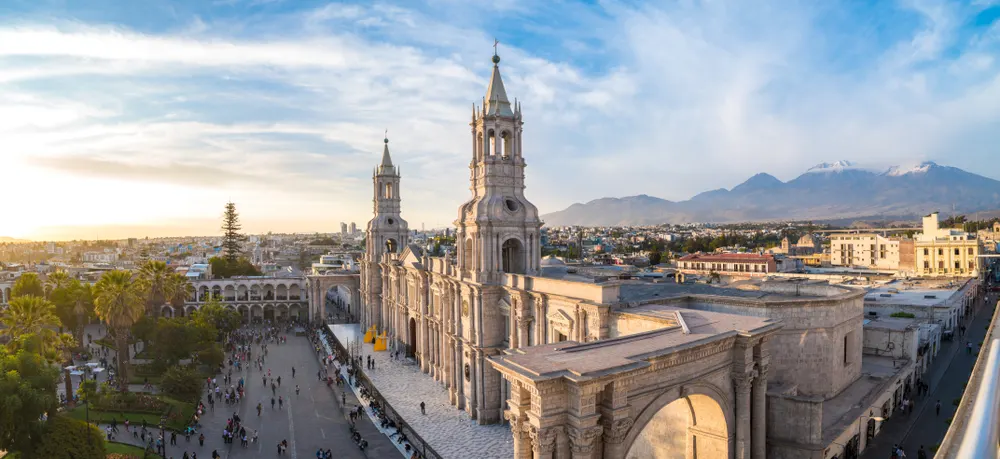
Stephanie van Deventer/Shutterstock
The influences of Spanish colonization have effected the religion of Peru as well. The official religion in the country is Roman Catholic. Of course, there are other religions in Peru, but over 75% of the population is a practicing catholic.
Frequently Asked Questions
Here are some frequently asked questions for travelers interested in visiting Peru:
What is Peru Famous For?
Peru’s most visited attraction is by far Machu Picchu. The ancient city is centuries old. It is so impressive that it was recently named one of the New Seven Wonders of the World in 2007.
Is Peru a Poor or Wealthy Country?
In the past, Peru has had its fair share of economic issues. Its roughest period in recent history was the 1980s. Right now, the economy is in good condition and is growing.
What Language Do They Speak in Peru?
The dominant language in Peru is Spanish. Almost the entire country speaks it besides some remote natives that speak languages like Quechua. Most of the people that speak a native language also speak Spanish.
What is Typical Food in Peru?
Peru is a coastal country, so seafood dominates the diet for much of the population., The climate of the country means quality produce grows easily. This means quality citrus fruits nada fresh vegetable.s
How Safe is Peru to Travel?
Violent crimes like kidnapping or murder are very rare in the country, especially for tourists. If you are traveling there, you do need to be careful about getting pick pocketed or having items stolen. The main crime you need to be worried about is property crime.
Over to You — Book Your Trip Today!
So, with so much to see and do, what are you waiting for – book your trip today and experience for yourself all that Peru has to offer. Happy travels!



